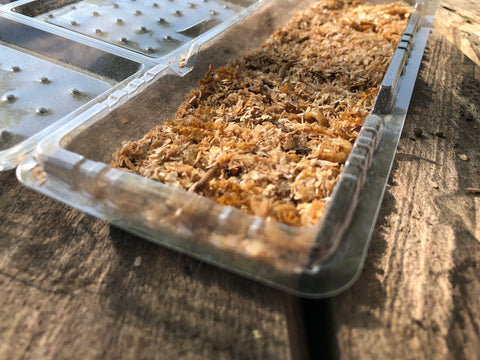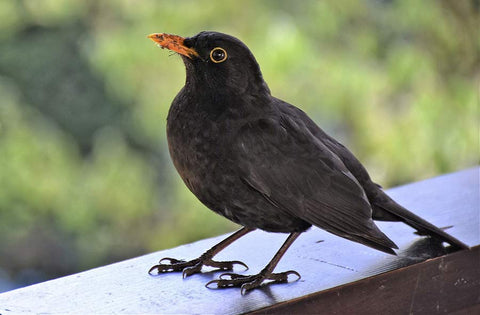Feeding Garden Birds - Nurturing Avian Diversity through Nutrient-Rich Mealworms
Garden birds are nature's harmonious companions, adding splashes of colour and cheerful songs to our outdoor spaces. Their presence not only enriches our surroundings but also contributes to the balance of local ecosystems. An integral part of responsible bird care, feeding garden birds with live mealworms can be a transformative experience in nurturing avian life. In this comprehensive guide, we will delve into the art of nourishing our feathered friends with these protein-packed delights, exploring their myriad benefits, optimal feeding techniques, and the immense satisfaction of creating a flourishing bird-friendly habitat.
Benefits of Mealworms for Garden Birds
Mealworms, the larvae of darkling beetles, are veritable nutritional powerhouses that offer a multitude of advantages for our avian companions. Bursting with protein, essential fats, vitamins, and minerals, these delectable morsels serve as a source of sustenance that not only fuels their energy but also supports their growth and vitality.
These nutrient-rich treats hold significant value, especially during crucial stages of a bird's life. For instance, during the breeding season which typically runs between March to July, mealworms can provide a readily available source of high-quality food for parent birds, ensuring that they have the nourishment required to raise their young. Additionally, mealworms play a vital role in feather maintenance, promoting the regrowth of feathers and aiding in the moulting process.

Placement Strategies for Mealworm Feeders
Strategically positioning mealworm feeders is pivotal in attracting a diverse range of bird species to your garden. Here's how to optimise the placement of your feeders:
Sheltered Havens: Locate feeders near natural shelter such as bushes, trees, or vegetation to create a sense of security for visiting birds.
Balancing Visibility and Safety: Maintain a delicate equilibrium between visibility and safety. Birds should be able to see the feeders clearly while being shielded from potential predators.
Varied Heights: Set up feeders at varying heights to cater to different bird species with varied foraging behaviours. This can accommodate ground feeders, perching birds, and even aerial visitors.
Multiple Stations: To avoid overcrowding and territorial disputes, establish multiple feeding stations throughout your garden, allowing various species to partake in the feast.
Attracting a Kaleidoscope of Bird Species
The practice of offering mealworms has the enchanting ability to beckon a diverse array of bird species, each with its own unique characteristics and behaviours. Some of the captivating visitors you may attract include:
Robin: Recognisable by their iconic red breasts and melodious songs, robins are ground feeders that tend to appreciate mealworms placed near shrubs or on the ground.
Blue Tit: With their vivid blue and yellow plumage, blue tits are agile and inquisitive birds. They favour hanging feeders, making them likely candidates for enjoying mealworms.
Blackbird: Often observed foraging on lawns, blackbirds have a hearty appetite for mealworms. Providing these treats in ground feeders or on trays can be especially inviting to them.

Sustaining Year-Round Feeding
Feeding garden birds with mealworms can and should be a year-round endeavour. While the significance of mealworms during the breeding season cannot be overstated, their importance extends to the colder months as well, when natural food sources become scarce.
In winter, consider employing shelters or covered feeders to protect mealworms from freezing temperatures. This small but meaningful gesture can significantly contribute to the survival of numerous bird species by ensuring they have a reliable food source during the harshest months.
Tips for Sustainable Bird Feeding
Moderation is Key: While mealworms offer exceptional nutritional value, it's essential to incorporate them into a balanced diet. Complement them with other bird-friendly foods like seeds and nuts.
Maintain Hygiene: Regularly cleaning feeders is imperative to prevent the spread of diseases. Moist conditions in feeders can lead to bacterial growth, so keep them dry.
Provide Fresh Water: A constant supply of clean water complements mealworm offerings, ensuring birds have both sustenance and hydration.
Exercise Patience: Birds may take time to discover and trust new food sources. Exercise patience, and over time, your efforts will bear fruit in the form of frequent visitors.
Feeding garden birds with mealworms transcends mere sustenance; it's an investment in the health and vibrancy of local avian populations.
By offering these nutrient-rich delights, strategically positioning feeders, and cultivating a welcoming environment, you can relish the captivating presence of a diverse ensemble of bird species. Whether it's the cheerful melodies of blue tits or the graceful foraging of robins, the rewards of providing for garden birds are truly boundless.
Embrace the joy of harmonising with nature as you enrich your outdoor space with the wonders of mealworms and the enchantment of feathered guests. By fostering a habitat that nurtures avian diversity, you become an integral part of the intricate tapestry of life that thrives in your garden.
